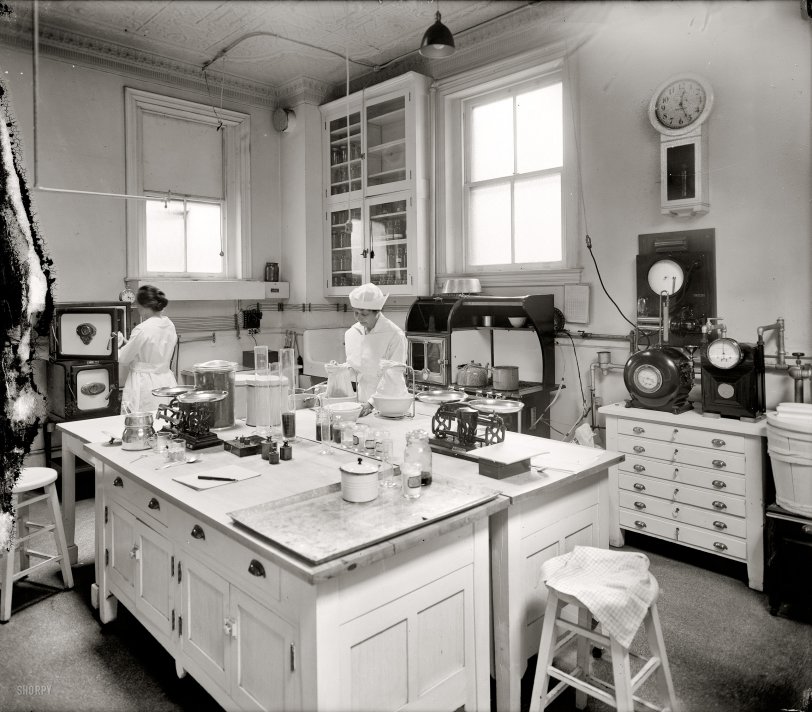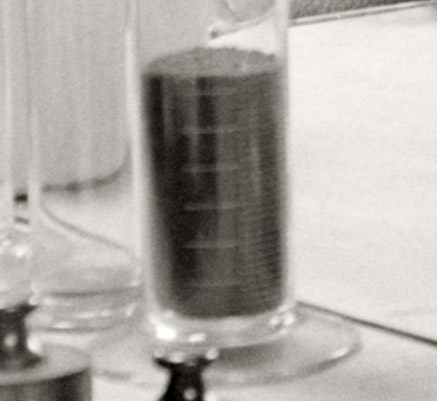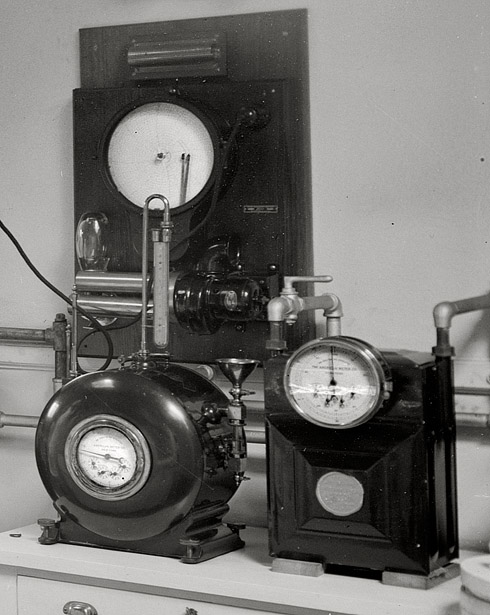


Framed or unframed, desk size to sofa size, printed by us in Arizona and Alabama since 2007. Explore now.
Shorpy is funded by you. Patreon contributors get an ad-free experience.
Learn more.

- Baldwin 62303
- Baldwin VO-1000
- Cold
- No expense spared
- Tough Guys
- Lost in Toyland
- And without gloves
- If I were a blindfolded time traveler
- Smoke Consumer Also Cooks
- Oh that stove!
- Possibly still there?
- What?!?
- $100 Reward
- Freeze Frame
- Texas Flyer wanted
- Just a Year Too Soon
- WWII -- Replacing men with women at the railroad crossing.
- Yes, Icing
- You kids drive me nuts!
- NOT An Easy Job
- I wonder
- Just add window boxes
- Icing Platform?
- Indiana Harbor Belt abides
- Freezing haze
- Corrections (for those who care)
- C&NW at Nelson
- Fallen Flags
- A dangerous job made worse
- Water Stop
Print Emporium
Home Ec: 1920

Washington circa 1920. "Home Economics Section." A test kitchen at the Department of Agriculture, also seen here. Harris & Ewing. View full size.
The Sunday roast
Remembering how much unattended cooking was going on in the 1950's without the benefit of oven thermostats and alarm clocks! Sunday dinner was customarily put in the oven before leaving for church. After church, everyone had to rush home turn off the oven.
Our old 1920's gas oven didn't have a thermostat; the thermometer on the oven door simply registered an ever-increasing temperature. Mom would pop in the roast in a covered pan to contain any possible fire, light the burner with a match and prop open the oven door with a 2x4 to regulate the temperature.
We were fortunate to live around the corner from the church because she could nip out during the sermon and run home to check the oven. For others who lived many blocks away, a long sermon meant a burned roast.
Amazing that pre-gentrified New York City didn't burn to the ground in the 1950's with all those unattended old stoves merrily heating up empty kitchens!
Psychrometer
The big meter on the wall may in fact be a recording humidity meter (psychrometer). Just below the dial is an electric motor and blower housing with a vent facing to the right. This blower appears be pulling air in through the two horizontal tubes from the left. One tube would contain a wet-bulb thermometer (note the glass water bottle for keeping the bulb wet) while the other tube serves as a dry bulb reference. The relative humidity can be calculated from the difference between these two temperatures. In fact, there are two pens on the chart; one may be plotting the wet temp (dew point) and the other the dry temp (ambient temperature). The closer they are, the more humid the air. A chart would be used to look up the actual humidity. Pretty high-tech for a 1920s kitchen!
The round meter
It's a precision gas meter, wet-drum type. Similar to this.
Meters
The meter on the wall beneath the clock looks like a hygrometer for measuring humidity. The square meter with the raised paneling looks much like a standard residential gas meter except for the large dial. The round meter next it has me flummoxed. The gauge at the top and the apparatus on the side makes me think it has something to do with steam. Why would they measure that? And why would leveling it be so important that it has built in leveling screws?
[Looks like a 24-hour graph recorder for measuring gas usage. - Dave]
Everything old is new again
Give those wooden cabinets a fresh coat of paint and they'd be right at home in a modern kitchen. The metal bin pulls are all the rage right now, too.
Westinghouse Range
The range to the left of the photo is a Westinghouse Automatic Electric Range. The alarm clock, mentioned by previous commenter, was part of the standard equipment: this was one of the first ovens to allow for preset, unattended use.
Free for the Afternoon But! --
Dinner Will Be Ready At Six!Prepare your dinner, place it in the Westinghouse oven. You are then free to attend your social affairs with absolute certainty that your dinner will be cooked to satisfy the most exacting appetite.
The Westinghouse Automatic Electric Range turns the heat on and off.
The Westinghouse Automatic Electric Range is more economical in fuel consumption than gas or coal; it costs but one dollar per person per month.
Great appliances
That range and those ovens are gorgeous, I would love to have those in my kitchen today. Thermometers in the doors of the ovens, imagine that!
Alarm clock
My grandmother gave me her old 1920s wind-up alarm clock exactly like the one shown on top of the oven. I believe it's a Westclox. They probably were using it here as an oven timer; it's got one heck of a loud bell alarm that sounds like an old fire alarm bell.
Contrasts
I love the contrast between the stark utility of the white woodwork and enamel, and the elegant tin ceiling and scrollwork on the metal equipment.
A kitchen, really??
Whatever food product that opaque black liquid is inside that graduated cylinder is something I want no part of.
[It's not a liquid. - Dave]

Wiring
I'd guess the wiring connects a system of heat sensors (thermocouples)
in the ovens and burners of the stoves. If that's the case, there would be no
danger of electrocution, since thermocouples generate a fraction of a volt.
Graduates and balances and weights, oh my!
Looks more like pharmacy lab than kitchen.
Time flies!
Almost time to go home or to lunch? I will go with a quarter past four.
Same Kitchen
Its the same kitchen we previously saw Odessa Dow experimenting with bread.
"It's alive! It's alive!!!"
The dawn of Frankenfood.
Creepy clean
Wow, clean as a whistle, but why did everything either medical or culinary look so derned scary in "them days"? I take it this isn't your neighborhood Village Inn!


























On Shorpy:
Today’s Top 5